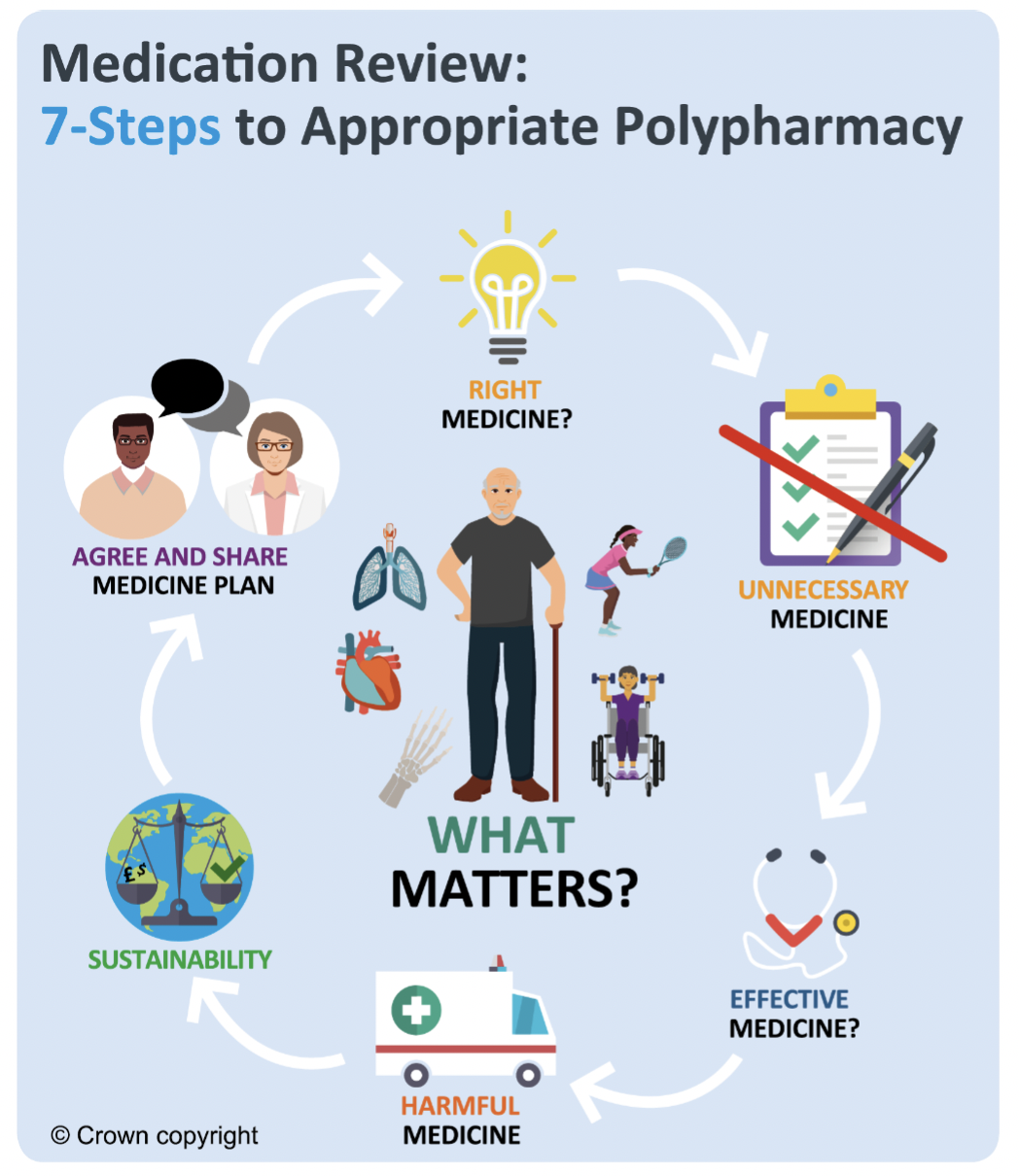Quality prescribing for respiratory illness 2024 to 2027 - draft guidance: consultation
We are consulting on this draft guide which aims to optimise treatment outcomes in the management of respiratory illness. Produced by Scottish Government, NHS Scotland and Experts by Experience, it builds on the 2018 to 2021 strategy. It promotes person-centred care, the 7-Steps process for medicine reviews and shared decision-making.
3. Introduction
What is the purpose of this guidance?
Respiratory conditions are a major contributor to ill health, disability, and premature death – the most common conditions being asthma and COPD. 1 Scottish Health Survey reported the average incidence of asthma as 16% and COPD as 4%.2
The World Health Organisation has identified chronic respiratory disease as a non-communicable disease (NCD) along with diabetes, cancers and cardiovascular disease. NCDs are responsible for 71% of global death annually. 3
The impact of respiratory conditions can vary depending on many factors. There is often a high prevalence of co-morbidities such as heart disease, hypertension and diabetes in individuals with respiratory conditions, which will also have to be addressed during a prescribing review. Optimising pharmacological treatment of these conditions is vital to help control symptoms and increase the quality of life for the individual.
The guidance promotes Realistic Medicine using the holistic 7-Steps polypharmacy approach to medicine reviews that includes shared decision-making, a personalised approach to care, reducing harm and waste and addressing unwarranted variation and ineffective prescribing practice. 4, 5
This guide will build on what already works well in respiratory prescribing and encourage further quality improvement within NHS Scotland. It highlights key respiratory prescribing indicators, and it is hoped that clinicians will reflect on their current practice in prioritised areas. The guidance should be read in conjunction with clinical guidance such as SIGN or NICE - it is not intended to replace them. The guidance has four main sections on asthma, COPD, bronchiectasis and Interstitial Lung Disease (ILD), focusing on Idiopathic Pulmonary Fibrosis (IPF).
Environmental considerations for respiratory prescribing will be introduced and explored. NHS Scotland has committed to be a net-zero greenhouse gas emissions organisation by 20406 with more individuals interested in their own carbon footprint.
We sometimes refer to ‘patients’ throughout the document, and recognise that different terminology is often used in official documentation. We recognise that patients are people who are managing different medical conditions, including respiratory disease.
Who is the guidance for?
It is for all health care professionals involved in respiratory care and prescribing decisions in both primary and secondary care including doctors, nurses, pharmacists, pharmacy technicians, physiotherapists and occupational therapists.
The guidance will be available on the Polypharmacy: Manage Medicines app 7 for ease of access and as an additional support for patients and clinicians. If clinicians can reflect on their own prescribing practice, it will help reduce unwanted variation of prescribing across Scotland.8
Why is the guidance important?
Figure 1 below highlights the spend of respiratory prescribing in Primary Care in 2021/22 by inhaler type. The total annual spend in 2021/22 was approx. £112.9 million. This represents 10.1 % of the Scottish Primary Care prescribing spend and is £11.9 million less than the total prescribed in 2015/16. Prescribing costs of Short Acting Beta Agonist inhalers (SABA) has reduced by 15% in the same time period. At the same time, there has been an increase in use of long-acting combination bronchodilator inhalers (LABA/LAMA) and triple combination inhalers (ICS/LABA/LAMA) as they are now more widely available and are more cost effective compared to single ingredient inhaler use.
| BNF Chapter | Total Spend | ||
|---|---|---|---|
| Drugs used in respiratory conditions | £112,923,078 | ||
| BNF Section | Section Spend | Class of Respiratory Medicine | Spend |
| Bronchodilators | £32,359,781 | Combination LABA & LAMA | £8,281,021 |
| Combination SABA & SAMA | £68,227 | ||
| LABA | £1,117,516 | ||
| LAMA | £14,396,961 | ||
| Other | £216,315 | ||
| SABA | £7,908,619 | ||
| SAMA | £130,846 | ||
| Theophylline | £240,276 | ||
| Corticosteroids (respiratory) | £76,947,302 | Combination ICS & LABA | £50,089,407 |
| Combination ICS, LABA & LAMA | £19,421,269 | ||
| ICS | £7,436,626 | ||
| Cromoglycate & LRA | £1,028,597 | LRA | £1,000,430 |
| Miscellaneous | £28,167 | ||
| Mucolytics | £2,587,398 | Mucolytics for CF | £1,726,179 |
| Mucolytics for COPD | £861,220 | ||
What are the benefits of guidance to patients?
This guidance focuses on quality prescribing and should result in improvements in patient care and treatment of respiratory conditions. The 7-Steps medication review process promotes a shared decision-making approach to medicine reviews and places the individual at the centre of their care to ensure prescribing is effective and appropriate for them. People will be encouraged to self-manage their condition where appropriate and be asked ‘what matters to you?’ 9 to support a holistic approach to care in line with the Scottish Government’s polypharmacy guidance. 5

What are the benefits to Health Boards?
Optimising therapy through shared decision-making will lead to improved person-centred care. Appropriate and effective use of pharmacological therapy for respiratory conditions will facilitate better outcomes for individuals with respiratory conditions and should therefore reduce health care utilisation and hospital admissions due to respiratory disease.
There is an increase in the volume of prescriptions dispensed and the cost of medicines year on year. Appropriate review of respiratory prescribing should improve medication safety and should ensure cost effective prescribing.
Contact
Email: EPandT@gov.scot
There is a problem
Thanks for your feedback